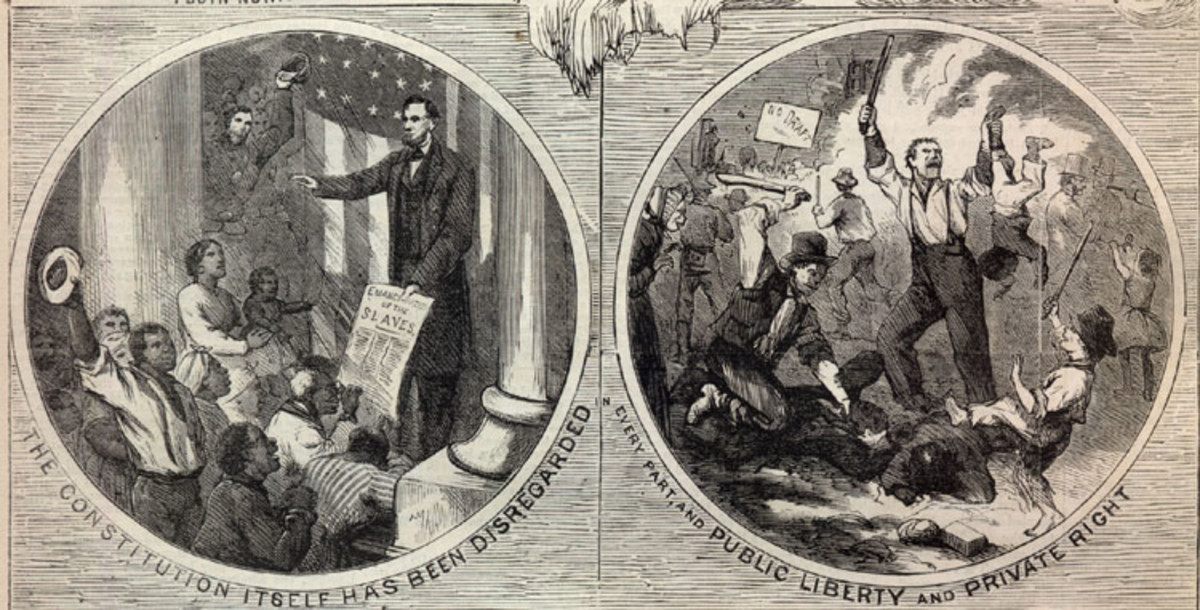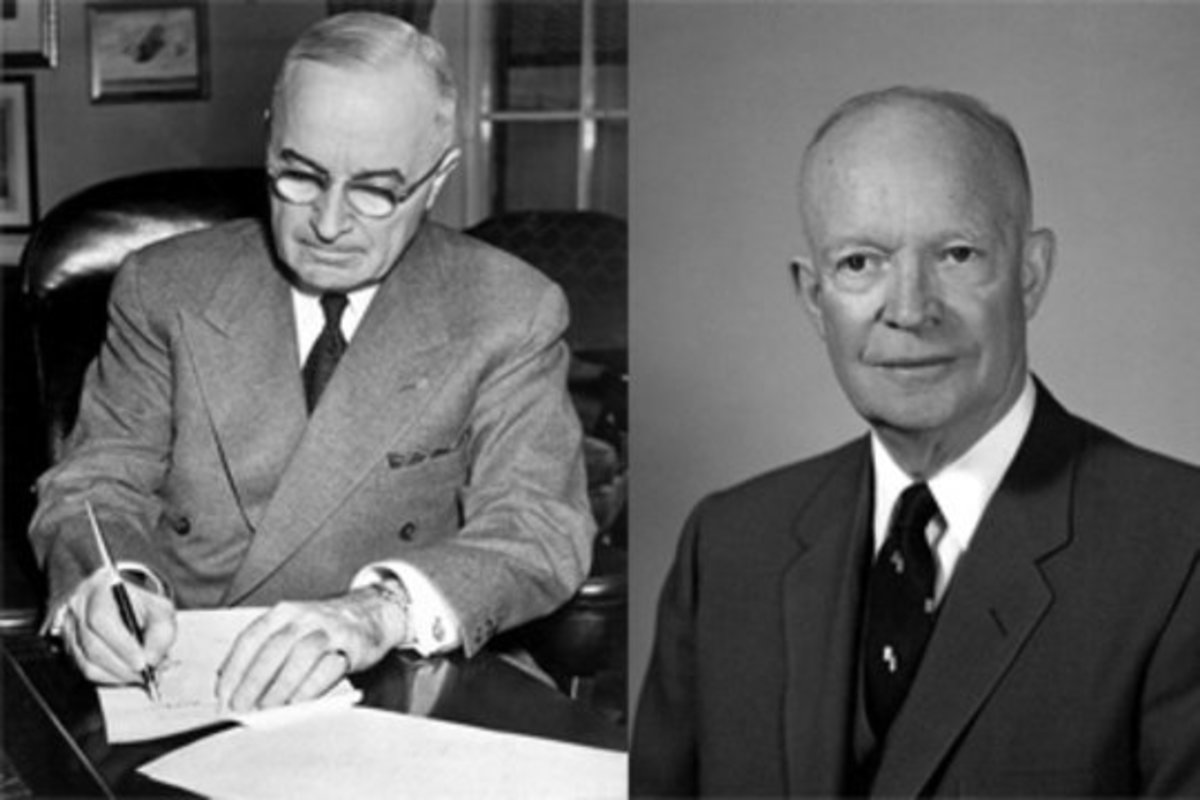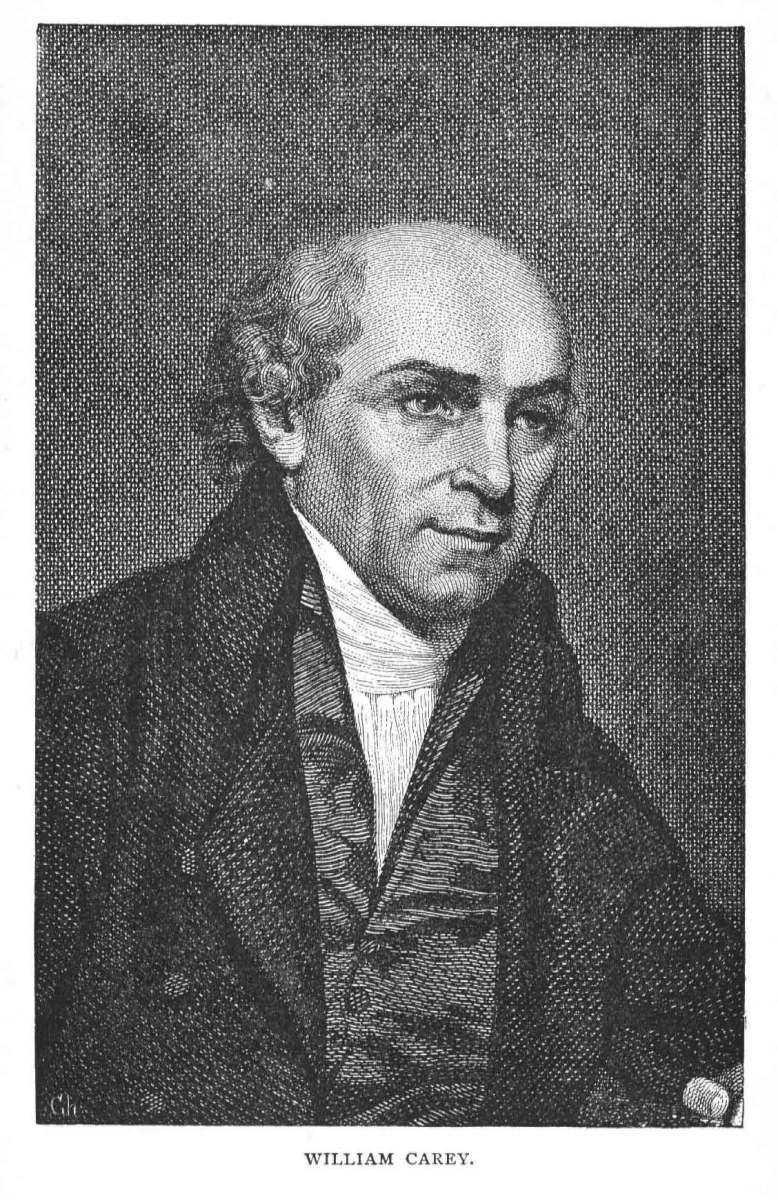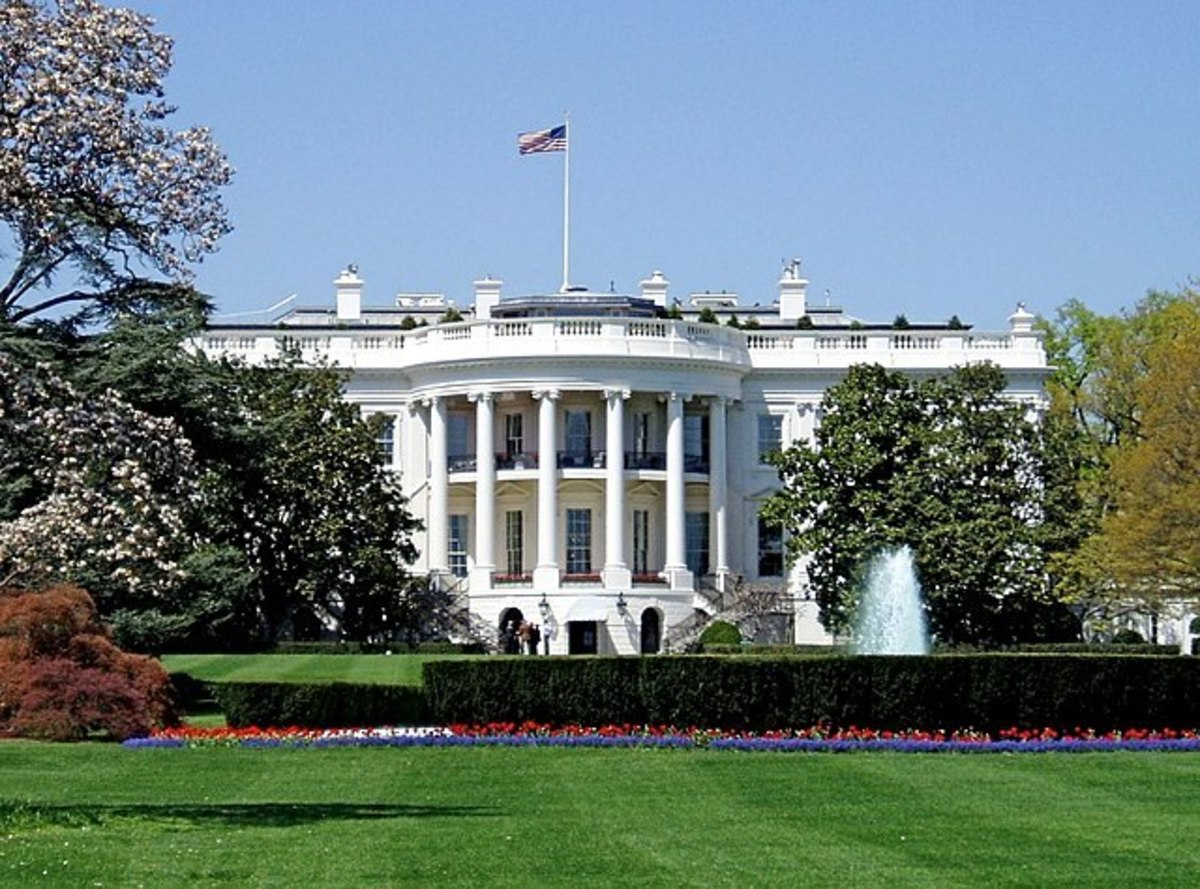American Foreign Policy After The Cold War

The United States emerged from the Cold War as the most powerful nation in the world militarily, however it was largely weakened during the war, especially economically. Thus, the United States was forced to shift focus from cultivating military strength to fostering a resilient economy. However, this shift in focus was not the only major policy change to occur in the post-Cold War world. Four presidents helped define US foreign policy in the first twenty years after the Cold War: George H.W. Bush, Bill Clinton, George W. Bush, and Barack Obama. Each of their presidencies encountered new obstacles on the global stage which forced them to make considerable changes to the United States’ foreign policy that did not exist before the Cold War.
Elected during the decline of the Cold War, President George H.W. Bush was suddenly in charge of a nation that came out of the war relatively weaker than when it had entered. The Berlin Wall came down, the Soviet Union collapsed, and rising conflicts in the Middle East all played into the theme of fragmentation in the post-Cold War world. However, with fragmentation also comes consolidation as President Bush and Clinton worked hard to establish a Western dominated world.
Bush worked tirelessly to repair relations with Russia while reducing both countries’ nuclear weapon stock piles. After the Soviet Union dissolved, President Bush sought to improve relations with the former Soviet Union. In April of 1992, Bush proposed an aid plan of 24 billion dollars to foster free market reforms in Russia. Just one month later, leaders from the United States, Russia, Belarus, Ukraine, and Kazakhstan signed a series agreements regarding a nuclear arms reduction. One month after that, President Bush and President Yeltsin announced an agreement to reduce nuclear warheads in their perspective states to between 3,000 and 3,500 by the year 2003 (“George HW Bush” 2019). President Bush’s response to the fall of the Soviet Union perfectly encompasses the themes of fragmentation and consolidation that the US foreign policy adopted after the Cold War.
Fragmentation struck again with the fall of the Berlin Wall in 1989 which had previously separated East and West Germany. As the East began to open, the United States made the unprecedented decision to support the reunification of Germany. This form of consolidation was such a novelty because before this time, the United States had always supported the creation of a democratic western-styled Germany. Thus, backing reuniting the East and West showed a large shift in US relations with Europe. This decision ultimately helped to increase the economic and political strength in Europe thus furthering the theme of consolidation.
Despite President Bush’s success, he lost his chance at reelection to Bill Clinton in 1992 thus making Clinton the first true post-Cold War President. Clinton ran on a platform of economic reform however his presidency largely centered around global engagement. Before Clinton was in office, Bush had sent American troops into Somalia as a humanitarian mission. The mission quickly turned into a bloody military conflict causing public support to wane and forcing President Clinton to withdrawal US forces in March 1994 (Riley 2019). Ultimately, US intervention in Somalia was a disaster which highlighted Clinton’s inexperience in foreign affairs. This failure contributed largely to Clinton’s late response 2 years later to the mass killings in Rwanda. The escalation in Somalia and the delayed response in Rwanda show the struggles Clinton faces with finding the balance of when American intervention is necessary.
Clinton, like Bush before him, also had to face the consequences of fragmentation in the form of ethnic wars within Europe. The Balkans faced numerous civil and ethnic conflicts for years until the US intervened. The warring parties consisted of the Croats, Serbs, and Bosnian Muslims who eventually agreed to sign the Dayton Peace Accords. Clinton later enforced a cease-fire which was followed by free elections in September 1996. After facing disaster in Somalia and Rwanda, Clinton was able to align with NATO to enforce a settle in war-torn Bosnia without having to sacrifice any American lives, thus returning to the theme of consolidation once again (Riley 2019).
While Clinton did follow Bush’s foreign policy and consolidation in the post-Cold War world, he took his ambitions one step farther with his doctrine of enlargement (Riley 2019). According to author Russel Riley from the University of Virginia, this doctrine was “based on the idea of expanding the community of market democracies around the world, embracing free trade, multilateral peacekeeping efforts and international alliances, and a commitment to intervene in world crisis situations when practical and morally defensible (2019).” The United States was a superpower and Clinton recognized the moral responsibility that came with that rule, leading him to intervene in situations where human rights were threatened.
In 2001, the Republicans once again had hold of the Presidency after George W. Bush was elected President. His election proved to be very controversial however, Bush proved to be a strong leader in regards to national security thus gaining the trust of the American people. A lot of his early presidency was a continuation of former President Clinton’s foreign policy however he wasn’t very interested in pursuing Osama bin Laden. Everything changed however, on Tuesday, September 11, 2001 with the terrorist attacks on the World Trade Centers and the Pentagon. Such a large-scale terrorist attack on American soil forced an unprecedented shift in American foreign policy.
Before the terrorist attacks of 9/11, the Bush administration had been moving back towards a renewed policy of isolationism however after being attacked by a non-state actor, President Bush had to return to the global stage and formulate an appropriate response. Bush addressed the nation and made his stance clear when he said, “We will make no distinction between the terrorists who committed these acts and those who harbor them (Gregg 2019).” In his speech, Bush declared a war on terror and those belonging to the “axis of evil” who threatened national security. Bush recognized that the most present danger to America at that time came in the form of terrorist group al-Qaeda which was located largely in Afghanistan. Fearing that the US had lost credibility as a dominant world power after the terrorist attacks, Bush decided to act swiftly and strongly by invading Afghanistan and launching air strikes against the Taliban (Gregg 2019).
In 2002, the Bush administration released the Bush Doctrine which represented the national security strategy of the United States. The doctrine had 3 key points. The first point outlined the plan for preventative war where the US would preemptively attack an enemy nation or terrorist group before they could strike first, thus deterring any potential attackers. The second point involved a major policy shift to unilateralism where the US would act alone to protect itself if necessary. The third point involved spreading democracy and freedom worldwide. Neoconservatives supported the concept of unilateralism and preemptive attacks while other groups thought preemptive war was morally unjust (Gregg 2019). Bush’s creation of Guantanamo Bay outside of US soil also raised a lot of controversial views since its creation served to get around American laws. The concept of enhanced interrogation further ostracized US allies and contributed to Bush’s very harsh stance against terrorism.
While some may view the invasion of Afghanistan as a necessary retaliation after the 9/11 attacks, the war in Iraq was more a war of choice meant to take out Saddam Hussein. Using the excuse that Iraq had weapons of mass destruction, Bush convinced Congress to pass a resolution authorizing the President to go to war if necessary. On March 19, 2003, both British and US forces launched a bombing campaign in Baghdad with ground troops ready to deploy (Gregg 2019). After the invasion, it was revealed that there were no weapons of mass destruction however Saddam Hussein and his regime had already been overthrown. However, after a failed US attempt to set up a government in Iraq and disbanding the Iraqi army, the state quickly spiraled into chaos. Bush employed a policy of return on success that led to a slow return of troops. Bush later signed the Status of Forces Agreement which defined the security relationship between the US and Iraq and outlined a plan for US to withdrawal from the area by December 31, 2011 (Gregg 2019).
What we see from President Bush’s time in office is a hard-military stance against terrorism and a turn from the isolationist tendencies the US was leaning towards before 9/11. Bush also highly favored the option of “preemptive war” and the concept of “enhanced interrogation” that greatly deviates from the more humanitarian centered foreign policy of Clinton before him. Since such a large-scale terrorist attack had never occurred on US soil before, President Bush was forced to make unprecedented foreign policy decisions to defend national security.
When President Barack Obama took office, he inherited two wars from previous President Bush’s campaign as well as a poor economy. By the time of his election, the support for the wars in Iraq and Afghanistan were waning thus making a withdrawal of US troops a welcomed decision. In 2012, the Republican held Congress shifted interests towards domestic policy allowing Obama to disengage active combat in Afghanistan by the year 2014. Obama’s questionable military strength was given renewed credibility on May 2, 2011 when Seal Team Six successfully killed al-Qaeda leader, Osama bin Laden (Nelson 2019). While still disengaging from Iraq and Afghanistan, Obama continued using drones to fight the war on terrorism. Unlike President Bush, Obama favored a multinational approach to war with emphasis on surgical air and Special Forces strikes. The President utilized this strategy in Libya, Syria, and various ISIS strongholds. The failure of Congress to regulate Obama’s campaign in the Middle East began raising concerns about the limits of executive power (Nelson 2019).
Obama differs from Bush in that he favors unmanned drones then boots on the ground as well as a multinationalism strategy rather than the unilateralist ideas of Bush’s neoconservatives. Obama had the burden of war, nuclear negotiations, and economic disparity however through diplomatic negotiation and strategic planning Obama was able to put out the situational fires as they arose. Perhaps if there was not so much occurring on the global stage, Obama would have gotten to have his own doctrine like many presidents before him.
After the Cold War, the United States quickly realized its weakened state and sought to make policy changes to correct and defend against such weaknesses. In the twenty years after the cold war, the nation saw many unprecedented events from supporting a unified Germany, to humanitarian aid in war torn countries, as well as the evolution of terrorism. As the world changes, so too must our leaders because the ability to adapt is sometimes the difference between life and death.
Works Cited
“George H.W. Bush: Key Events.” Miller Center, University of Virginia, 2019, millercenter.org/president/George-h-w-bush/key-events
Gregg, Gary L. “George W. Bush Foreign Affairs.” Miller Center, University of Virginia, 2019, millercenter.org/president/gwbush/foreign-affairs.
Nelson, Michael. “Barack Obama Foreign Affairs.” Miller Center, University of Virginia, 2019, millercenter.org/president/Obama/foreign-affairs.
Riley, Russel L. “Bill Clinton: Foreign Affairs.” Miller Center, University of Virginia, 2019, millercenter.org/president/Clinton/foreign-affairs.








